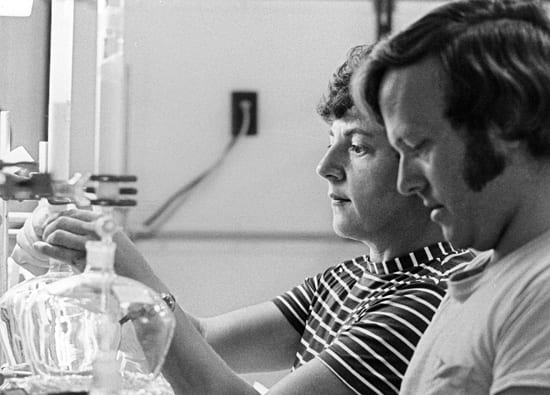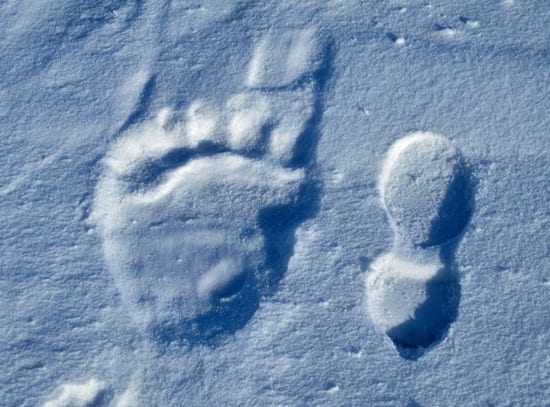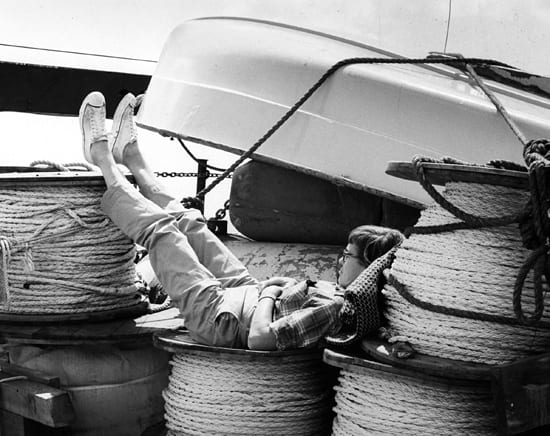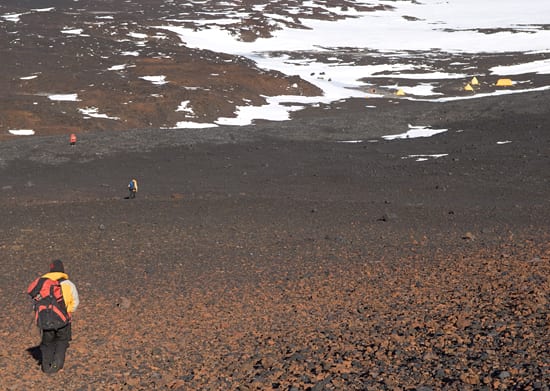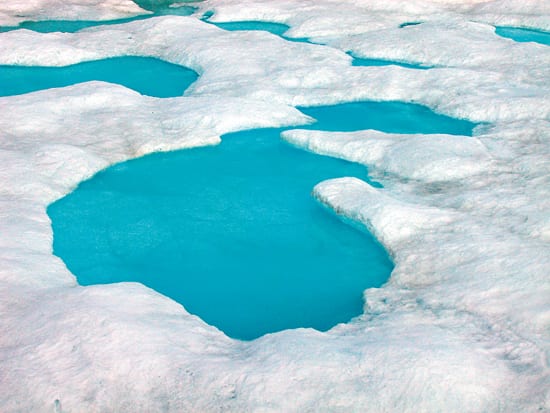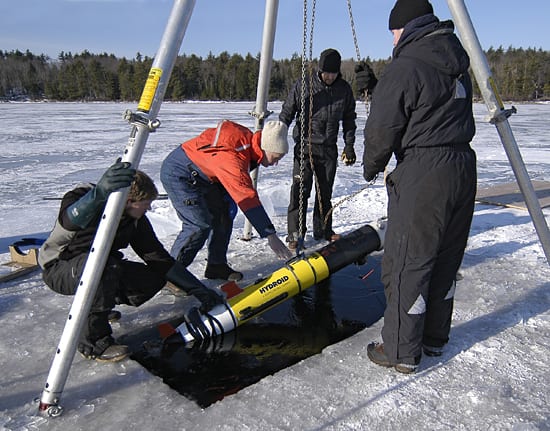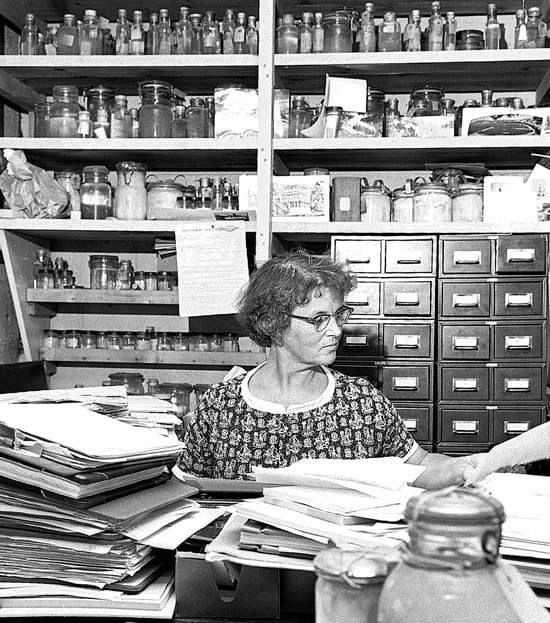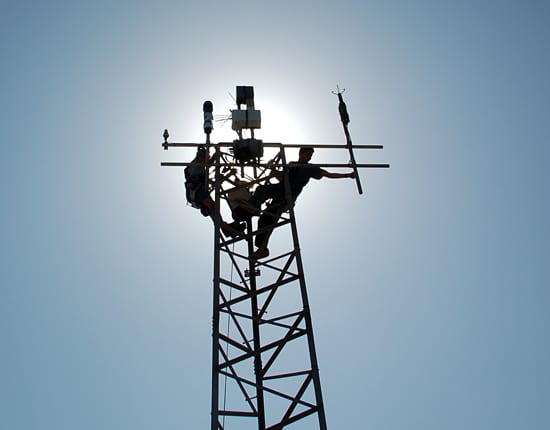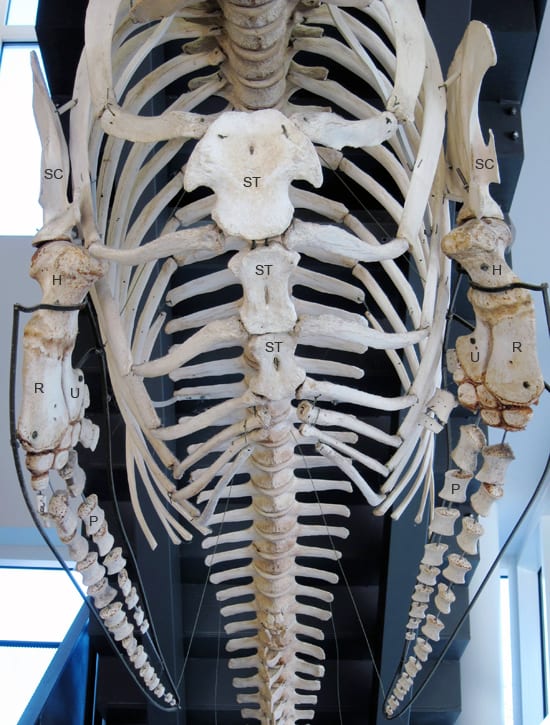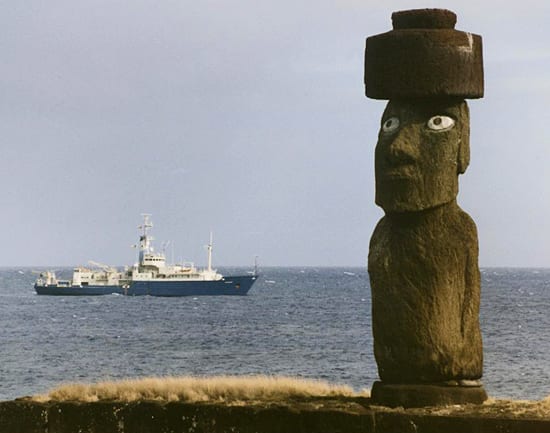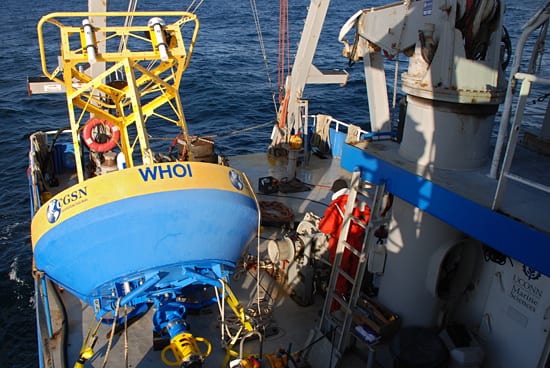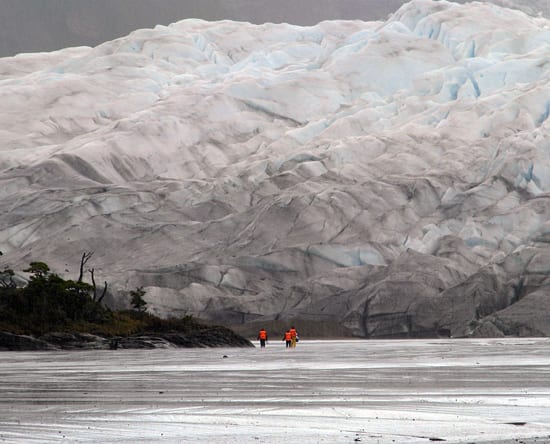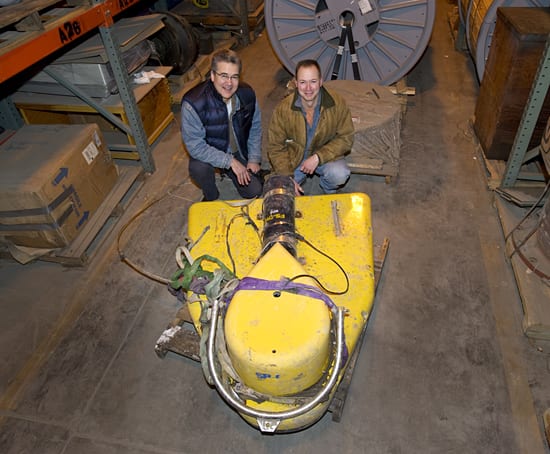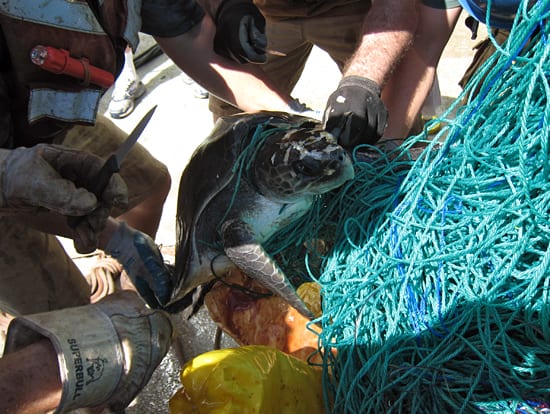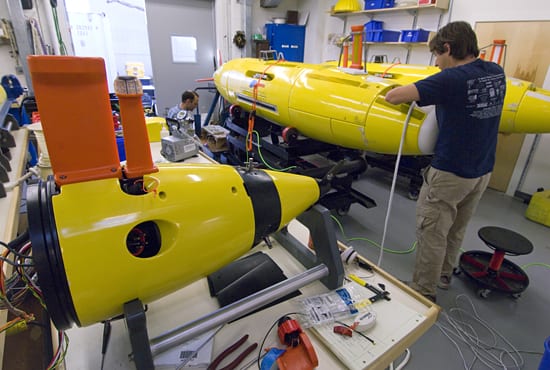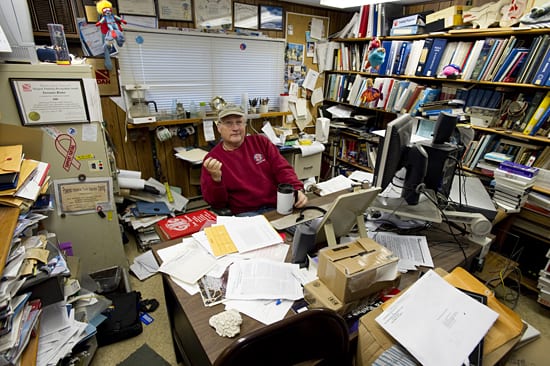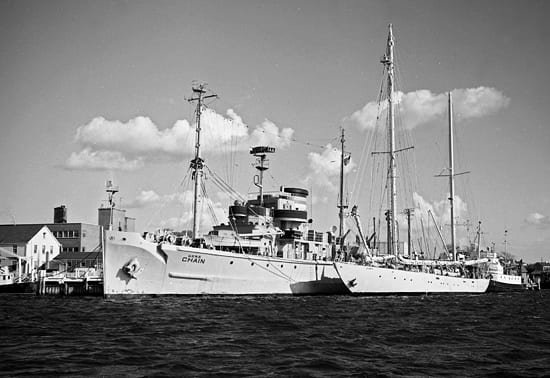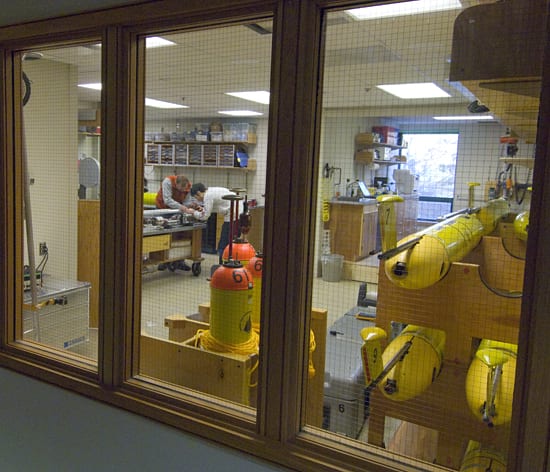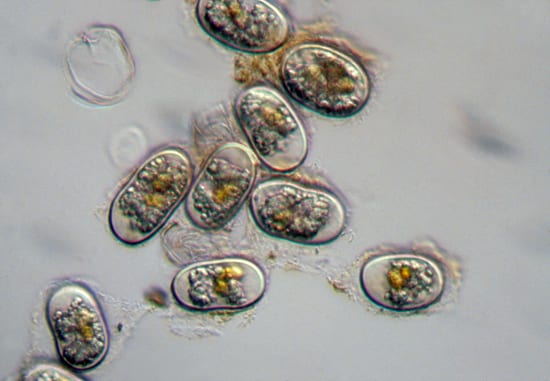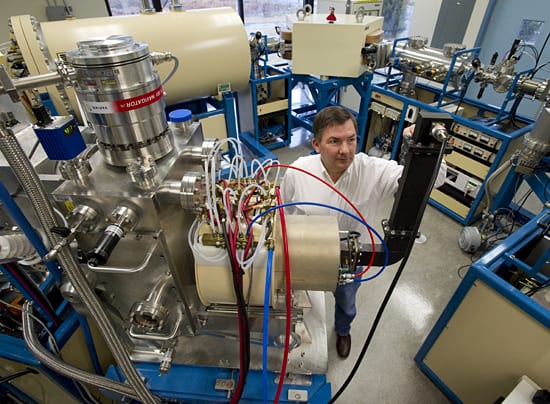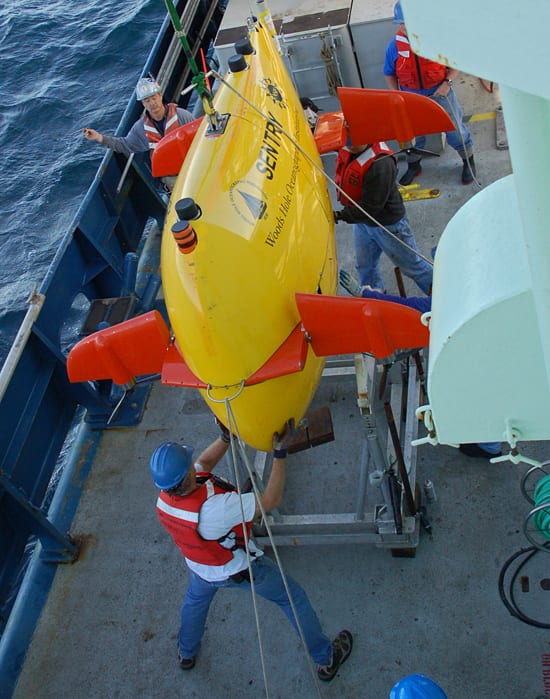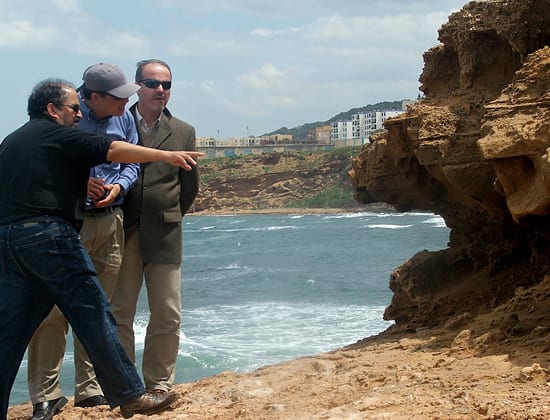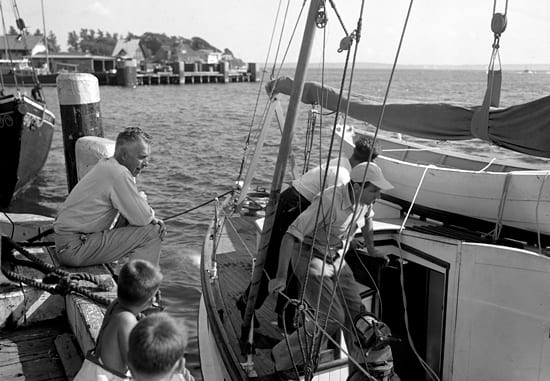Multimedia Items
Ready to mow
A Remote Environmental Monitoring Unit (REMUS) 6000 vehicle sits on the deck of a ship during a 2009 mission. Three REMUS 6000 vehicles, designed by the Ocean Systems Laboratory at…
Read MoreSleuthing for contaminants
In a WHOI chemistry laboratory in the mid-70s, researchers Helen Mikelas and Bruce Tripp extracted and concentrated organic contaminants from seawater, including PCBs (polychlorinated biphenyls—toxic compounds used in industrial manufacturing,…
Read MoreArctic footprints
Bone-chilling temperatures, biting winds, and rapidly changing sea ice conditions make the Chukchi Sea off Point Barrow, Alaska, a particularly difficult place to work. And then there are the curious…
Read MoreAt sea with a pioneer
Elizabeth (“Betty”) Bunce waits for a sediment core to come up, aboard R/V Chain circa 1958. One of the first woman oceanographers, Bunce (1915-2003) was kind and loyal as well…
Read MoreFor the love of rock
One reason geologists love Antarctica: the ice-free areas are frozen in time. There are no rainstorms, roots, worms, or gophers to disturb the landscape, and no leaves, grass, or wildflowers…
Read MoreAzure pools of summer
The Arctic, a crucial part of Earth’s ocean and atmospheric systems, is experiencing rapid warming, and WHOI scientists are studying the region and its interactions with the global ocean and…
Read MoreFlying under ice
A team from the Oceanographic Systems Lab at Woods Hole Oceanographic Institution (WHOI) test a REMUS (Remote Environmental Monitoring UnitS) 100 vehicle in a frozen pond in New Hampshire to…
Read MoreWoman Pioneer
In this 1960 photo, Mary Sears is surrounded by papers and biological samples in her Bigelow Laboratory office. Sears was the first recipient of the original Woman Pioneer in Oceanography…
Read MoreHigh-profile job
With the hot Saudi sun behind them during a 12-hour job, WHOI’s Paul Bouchard (left) and Tom Farrar replace instruments on a 10-meter-high meteorological tower on the campus of King…
Read MoreBones about it
The skeleton of a pilot whale (Globicephala melaena) hangs in the lower-level foyer of the Marine Research Facility on the Quissett campus of Woods Hole Oceanographic Institution (WHOI). The whale…
Read MoreEaster Island
The research vessel Knorr shown anchored off the port of Hanga Roa, Rapa Nui (Easter Island) during an expedition in May 1992. R/V Knorr is probably best known as the…
Read MoreTest buoy deployed
The Electro-Optical-Mechanical (EOM) test buoy for the Ocean Observatories Initiative (OOI), stowed on the fantail of the R/V Connecticut, was deployed in January on a mooring in 152 meters of…
Read MoreSediment sampling
A team of researchers led by Sebastien Bertrand, of the WHOI Marine Chemistry and Geochemistry department, took sediment samples during five weeks of field work in the fjords of Chilean…
Read MoreLost and found
This towbody that houses an advanced broadband acoustic echosounder was lost in waters east of Provincetown in October, 2006 during a routine calibration off of the R/V Tioga. WHOI Senior…
Read MoreTurtle rescue
The R/V Atlantis crew was working off the Galapagos Islands with the human occupied submersible Alvin, when Captain AD Coburn noticed a yellow object floating approximately 1000 meters off in…
Read MoreReadying REMUS
Brennan Phillips (right) and Greg Packard (background) work on two Remote Environmental Monitoring UnitS — or REMUS vehicles — in the Ocean Systems Laboratory at WHOI. Three REMUS 6000 vehicles…
Read MoreEverything in its place?
Diving safety officer Terry Rioux (shown here in his office) is responsible for all day-to-day aspects of scuba diving at Woods Hole Oceanographic Institution (WHOI), including review and enforcement of…
Read MoreChain and the A-boat
Woods Hole Oceanographic Institution (WHOI) research vessels Chain and Atlantis at the WHOI dock in 1958. Atlantis was the first WHOI research vessel and the first ship built specifically for…
Read MorePrepping a glider
John Lund, left, and Ben Hodges work in the glider lab on a Spray glider, an autonomous underwater vehicle, or AUV. The Spray glider—about six and a half feet long…
Read MoreCyst survey
Harmful algal bloom (HAB) cells shown under a microscope. WHOI scientists issued an outlook for a significant regional bloom of a toxic alga that can cause ‘red tides’ in the…
Read MoreFlowing stream
Mark Roberts works on the gas ion source of the Continuous Flow Accelerator Mass Spectrometer (CFAMS), a Carbon 14 measurement system at WHOI. CFAMS was designed specifically for the continuous…
Read MoreMore autonomy
WHOI’s new deep-diving autonomous underwater vehicle Sentry was launched from the research vessel Atlantis off the coast of Santa Barbara, Calif., in September 2009 to search for cold seeps—naturally occurring…
Read MoreAlgerian quake clues
Senior Scientist Jian Lin (in blue shirt) and colleagues examine geological evidence of past earthquakes near the Mediterranean coast of Algeria. A study of the interplay of stresses surrounding a…
Read MoreWhere currents converge
Columbus O’Donnell Iselin, the second director of the Woods Hole Oceanographic Institution, sees Edmund Watson and others off on a 1950 Gulf Stream cruise aboard a boat called Seal. Iselin,…
Read More

